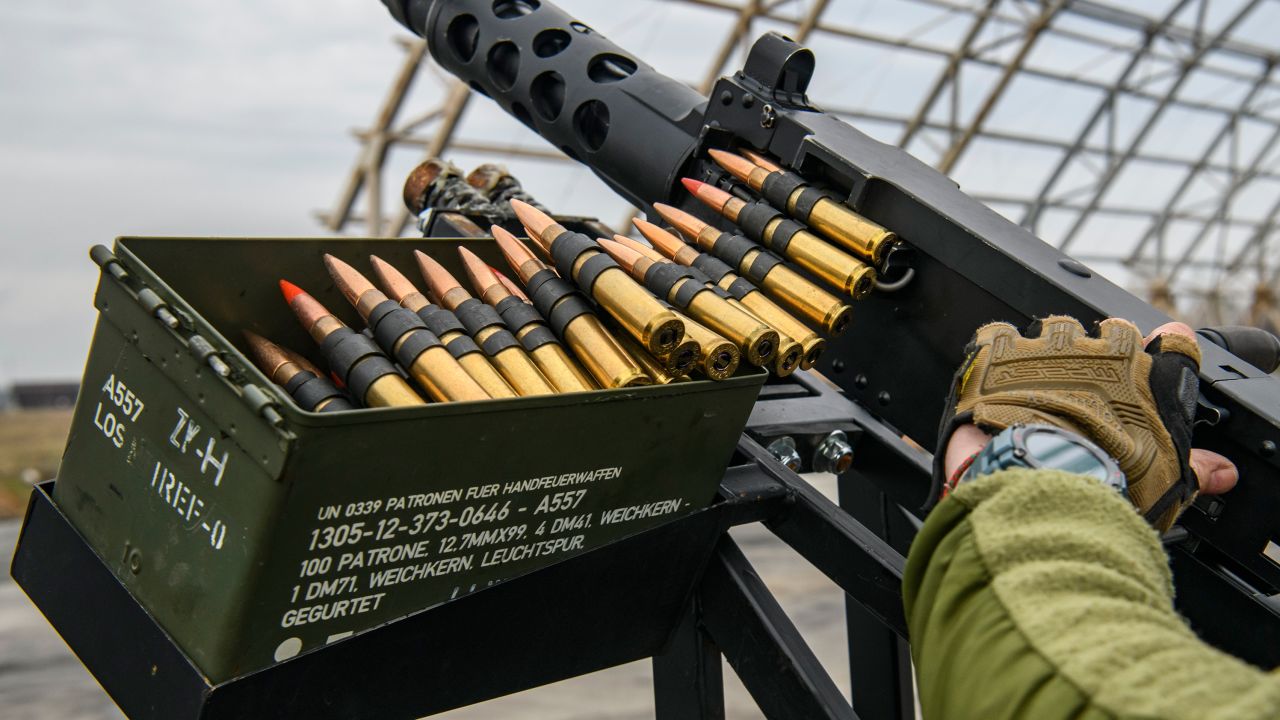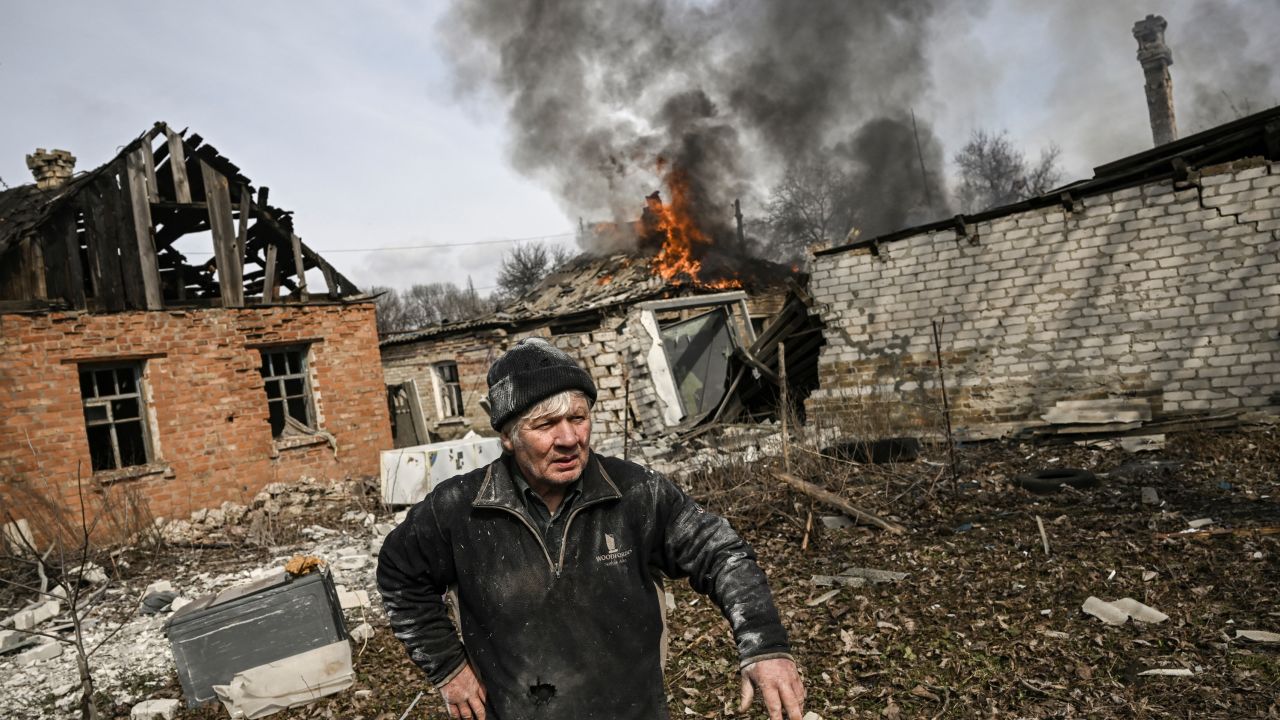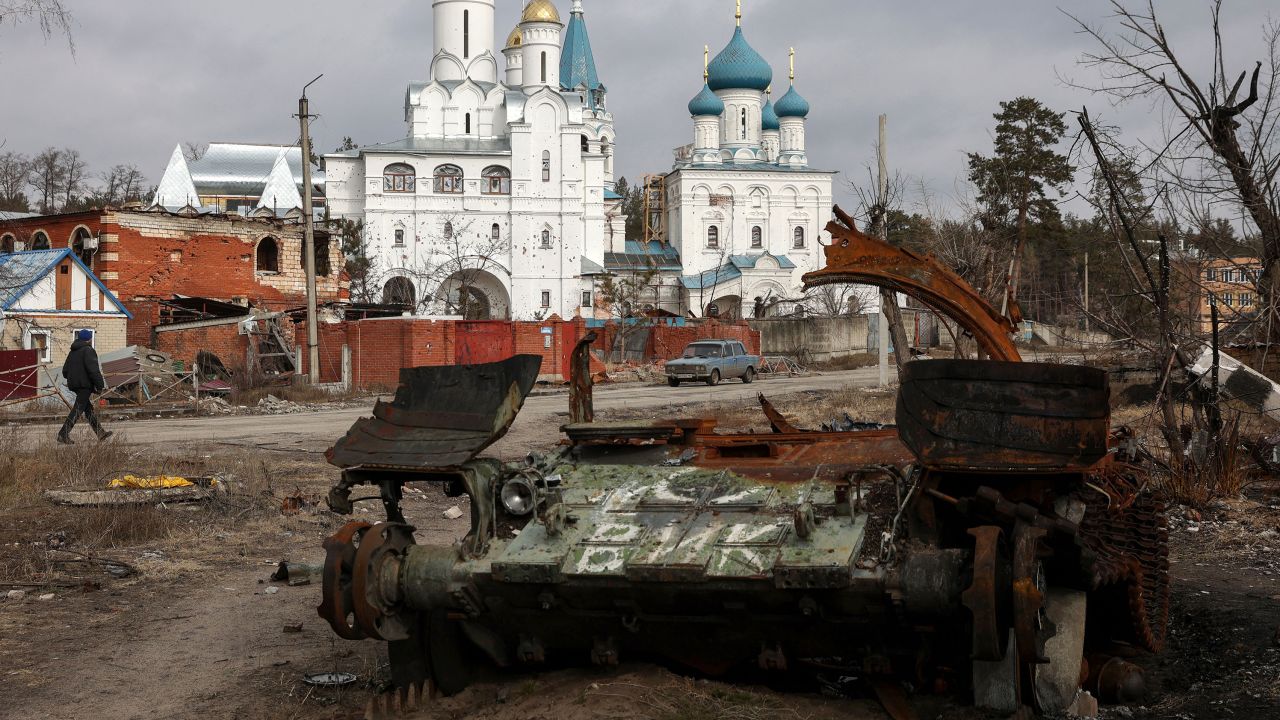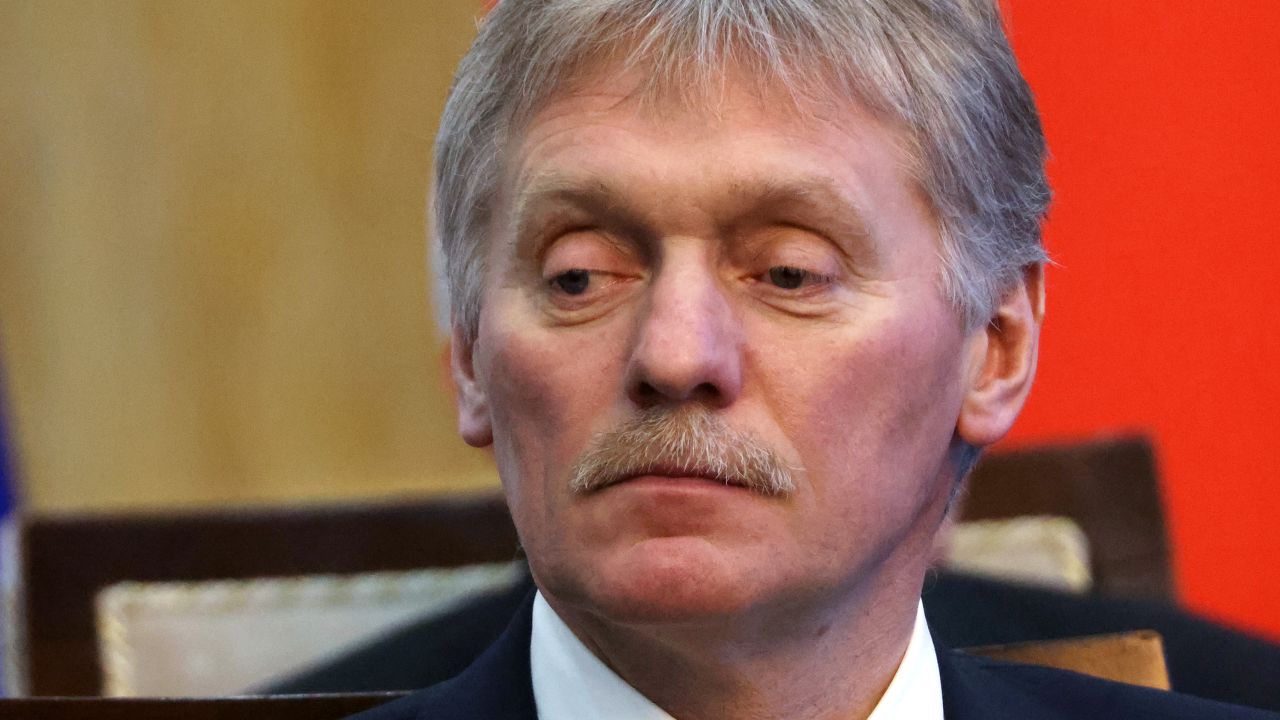CNN
—
There are several significant takeaways from the leaked US documents about the course of the conflict in Ukraine.
Russian ground forces in the country are approaching exhaustion and there are few reinforcements available. Ukrainian air defenses are depleted, making any counteroffensive vulnerable to Russian air superiority. And the United States does not expect the war to end this year.
The 53 documents reviewed by CNN provide a snapshot of capabilities and vulnerabilities as perceived by the US Defense Department in the first quarter of this year.
Snapshots are inherently risky: Circumstances change, as do resources and intentions. But the documents tend to confirm that Ukrainian forces are preparing for an offensive and that Russia is putting extensive effort into holding what it already has, while looking to aviation to blunt any Ukrainian attacks.
And if the Russians were unaware of the way the Ukrainian military would design its counteroffensive, the documents may have given them some useful indicators.
Several of the documents, which appear to date largely from February and March, tend to confirm that Russia has committed the vast majority of its army battalions to its war on in Ukraine. Despite the mobilization last autumn, which potentially added 300,000 soldiers to the Russian ranks, a significant minority of these battalions are described as “combat ineffective” – short of men and equipment.
One document says that 527 out of 544 available Russian battalions are committed to the operation, and 474 are already inside Ukraine. A substantial number are deployed in the south of the country – with an estimated 23,000 personnel in Zaporizhzhia and another 15,000 in Kherson. That suggests the Russians expect any Ukrainian offensive to target that region.
But in Donetsk, for example, 19 out of 91 battalions were adjudged as “combat ineffective.”
Russia still has vast inventories of hardware, but the documents suggest that some of the best has already been lost, and older, less reliable armor is being dusted off. One says that Russia continued to fall behind stated goals for replenishing equipment and personnel, and was incorporating “older, less accurate munitions systems.”
The documents provide some startling estimates, suggesting that at one point early this year Russia had 419 tanks in theater, but had lost a staggering 2,048 during the conflict. They also suggest that at that time, Ukraine had more armored personnel carriers (APCs) and fighting vehicles in the field than did Russia.
This feeds into a broader estimate of what the Pentagon calls combat sustainability – the ability to continue fighting. While assessing both sides as having ‘moderate’ sustainability, Russian ground forces are at 63%; the Ukrainians at 83%.
According to documents obtained by the Washington Post, this degradation extends to Russian special forces, or Spetsnaz. One satellite image published by the Post showed the half-empty base of a Spetsnaz brigade in southern Russia in November 2022, with the comment that “all but one of five Russian Separate Spetsnaz Brigades that returned from combat operations in Ukraine in late summer 2022 suffered significant losses.”
CNN has not reviewed that document and cannot verify its contents. But throughout the conflict, Russian military bloggers and others have reported on the losses of special forces as they have been misused – often being thrown into battles where regular troops have failed.
Given that special forces require several years of training and play a critical offensive role, such losses are undoubtedly damaging.

While Ukraine’s ground forces may be in better shape than the enemy’s, especially once 12 new brigades mentioned in one leak are fully trained and equipped, its reliance on Soviet-era air defenses points to a growing vulnerability, according to the documents obtained by CNN. This in turn may give the Russian air force freedom of the skies to blunt any Ukrainian ground offensive.
One of the leaked documents detailed how Ukrainian stocks of Soviet-era medium-range air defense missiles were severely depleted. Ominously, it suggested that Ukraine had run out of munitions for the highly capable German-made Iris-T air defense system by February.
“Ukraine’s ability to provide medium-range air defense to protect the FLOT (front line) will be completely reduced by May 23,” stated one document from February.
As one layer vanishes, so other layers must be used to compensate, “reducing the ability to defend against Russian aerial attacks from all altitudes.” The inability to protect ground forces could mean Ukraine “loses the ability to strike, support and resupply” during any counteroffensive, according to the document.
Ukrainian officials are constantly asking Western partners for more air defense weaponry and one document talks of a three- to six-month window in which to solicit further Western contributions.
Just how vulnerable the Ukrainians are in the skies is indicated by another leaked document, which says the combat sustainability of the Russian air force stands at 92%; that of the Ukrainian air force at 68%. The Russian air force is much larger, while the Ukrainians are yet to receive pledges of any modern Western combat planes.
Matthew Schmidt, associate professor of national security at the University of New Haven, says he worries that Russia is “preparing its air force to devastate Kyiv once the counteroffensive starts,” in an effort to deepen what he calls a spiritual exhaustion among Ukrainian civilians.

There is considerable detail in the documents obtained by CNN about the training and equipping of the 12 brigades Ukraine is building for its counteroffensive (though crucially no discussion of where, when and how such an offensive will happen.)
The documents provide specifics on how each brigade will be equipped, which could potentially be useful to Russian commanders.
“It depends on whether the Russians think they can use it to do really good psychological profiles on the decision-making styles of commanders in order to be able manipulate and exploit that knowledge in battle,” Schmidt told CNN.
The Ukrainians are likely debating how these units should form up for what are known as Combined Arms Maneuvers, which simultaneously integrate different military capabilities.
The Russians will be looking for signs of where the brigades are deployed and whether they will be split up to enable supporting or diversionary attacks. But the Russians’ own intentions may not be watertight, according to some of the documents which disclose US penetration of Russian military communications. This disclosure alone is significant and may disrupt Russian planning, but at the same time may provide them with clues about their vulnerabilities.
Another interesting strand to emerge from the documents: The Russians are getting creative about procuring weapons. One leak reported by the Washington Post, which CNN cannot verify, suggests Moscow was seeking thousands of rockets from Egypt. Egyptian officials have denied any such deal was in the works.
Another document seen by CNN says that US intelligence was aware of efforts by the Wagner private military company to obtain Turkish weapons through the African state of Mali, where it has a presence.
CNN has not independently confirmed the veracity of the documents, but US officials have indicated that most of the leaked tranche are authentic. CNN has reached out to the US National Security Council, the office of the Turkish president and Turkey’s embassy in Washington for comment on the document.
Additionally, there is a suggestion that China is ready to supply lethal equipment to Russia, while wanting to keep it secret. The Washington Post cited “signals intelligence” indicating Russia’s Foreign Intelligence Service had reported that China’s Central Military Commission had “approved the incremental provision” of weapons.
In response to a request for comment from CNN, the Chinese Foreign Ministry spokesperson’s office said Beijing had always “adhered to an objective and fair stance on the Ukrainian issue” and “controlled the export of dual-use items according to laws and regulations.”
There’s been no evidence of lethal equipment directly supplied by China turning up on the battlefield, but a steady flow of weapons could significantly affect the military balance. US Secretary of State Antony Blinken hinted that Washington was aware of Chinese plans in late February, saying that, “The concern that we have now is based in information we have that they’re considering providing lethal support.”

While expressing annoyance over the disclosures, Ukraine has played down their significance. Defense Minister Oleksii Reznikov described them as “a mixture of true, false and outdated information.”
Kremlin spokesman Dmitry Peskov was perhaps a little more mischievous, saying Friday that, “Our focus is to thoroughly examine this data, while also critically assessing its authenticity, but to study it meticulously.”
However, Peskov dismissed reports in some of the documents that purportedly speak of rifts within Russian elites – and especially between the Federal Security Service (FSB) and Defense Ministry.
The FSB is reported to have been unhappy about the Defense Ministry’s under-reporting of casualties, according to documents reported by the New York Times which have not been seen by CNN. The finding highlights “the continuing reluctance of military officials to convey bad news up the chain of command,” according to the documents.

The Times also reported that Russian President Vladimir Putin summoned Defense Minister Sergei Shoigu and Wagner boss Yevgeny Prigozhin to a Kremlin meeting in late February to resolve their differences.
That dispute has been widely reported, not least by Prigozhin himself.
Turf battles within the Russian establishment are perennial. CNN contributor Jill Dougherty notes that, “Putin has always tried to balance one group against the other, people who already had some power or wanted more power or influence.”
But she added that Putin has been forced to be the moderator between Prigozhin and Shoigu. “It’s destabilizing and undermines his control.”
Ukrainian officials have regularly spoken of anticipating victory this year. But the US documents seen by CNN suggest the Pentagon thinks that unlikely.
One document says, “Russia’s grinding campaign of attrition in the Donbas region is likely heading toward a stalemate, thwarting Moscow’s goal to capture the entire region in 2023.” Another says that the damage done to Russian forces means that Moscow’s goals will be frustrated, “resulting in a protracted war beyond 2023.”
But Ukraine can’t afford a stalemate; denying Russia victory is not enough. The economy is on life support, the government’s budget heavily dependent on Western grants and loans.
For the one-third of the population already displaced, the idea of going home may slowly fade away.
Schmidt says: “The idea that this is a winnable war is as important to sustaining support as that it’s a just war. Despite the operational-level success of Ukraine, Russia still holds the strategic advantage.”
The documents that have appeared over the past week suggest that each side holds a very mixed hand. What they can’t measure is the determination, ingenuity and commitment that will be necessary to gain the advantage.